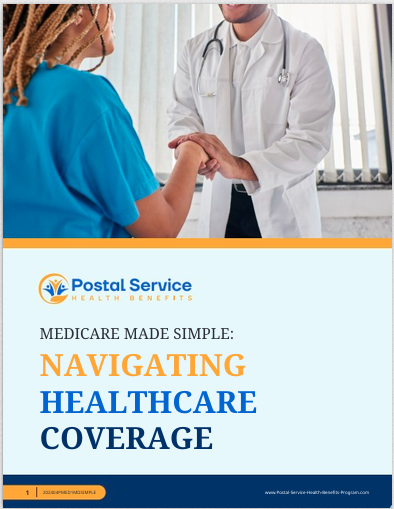Key Takeaways:
- To choose the best Postal Service Health Benefits (PSHB) plan, consider factors like personal health needs, plan coverage, and network availability.
- Compare multiple plans during the open enrollment period to ensure the best fit for your health and financial situation.
7 Top Ways You Can Find the Best PSHB Plan for Yourself
Choosing the right Postal Service Health Benefits (PSHB) plan is crucial for ensuring that you and your family have the best possible health coverage. With several options available, it can be challenging to decide which plan suits your needs the most. Here are seven top ways to find the best PSHB plan for yourself.
1. Assess Your Health Needs
The first step in selecting a PSHB plan is to assess your current and future health needs. Consider any chronic conditions, regular medications, or specific health services you or your family might require. Plans differ significantly in their coverage of certain treatments and medications, so understanding your health needs will help you narrow down your choices.
When assessing your health needs, consider your medical history and any anticipated healthcare requirements. For example, if you have a chronic condition like diabetes, you will need a plan that covers regular check-ups, medications, and possibly specialist visits. For families, it’s essential to consider the health needs of each member, including children who may require vaccinations and regular pediatric care. Elderly family members might need more extensive coverage for age-related health issues.
2. Understand Plan Types
PSHB plans come in different types, such as Health Maintenance Organizations (HMOs), Preferred Provider Organizations (PPOs), and High Deductible Health Plans (HDHPs). Each type has its benefits and limitations. For instance, HMOs often have lower premiums but require you to use a network of doctors and hospitals, while PPOs offer more flexibility in choosing healthcare providers but at a higher cost. HDHPs can be beneficial if you want lower monthly premiums and have a Health Savings Account (HSA) to cover high deductibles.
Understanding these plan types can help you decide which one fits your lifestyle and healthcare needs. HMOs might be suitable for those who prefer having a primary care physician coordinating their care. PPOs are advantageous for those who want the flexibility to see specialists without referrals. HDHPs are often chosen by individuals who are generally healthy and want to save on premiums while having the ability to use HSA funds for unexpected medical expenses.
3. Compare Plan Coverage
Not all plans cover the same services. It’s essential to compare the coverage details of each plan. Check for coverage of essential services such as hospitalization, prescription drugs, mental health services, and preventive care. Some plans may also offer additional benefits like vision and dental coverage, which can be crucial depending on your needs.
When comparing coverage, look at the specifics of each plan’s benefits. For instance, some plans might cover a broader range of prescription drugs or offer better mental health services. Preventive care coverage is another critical aspect, as it includes services like vaccinations, screenings, and check-ups that can help prevent severe health issues down the line. Also, if you or a family member need specific services such as physical therapy, ensure the plan covers these adequately.
4. Evaluate the Provider Network
Make sure the plan you choose includes your preferred healthcare providers. Check the plan’s network of doctors, specialists, and hospitals to ensure you have access to the care you need. If you already have a preferred healthcare provider, verify that they are in the plan’s network to avoid higher out-of-network costs.
Provider networks can vary significantly between plans. Some might have a broad network with many providers to choose from, while others might be more restrictive. If you have ongoing treatments or a relationship with certain healthcare providers, ensuring they are within the network is crucial. Additionally, evaluate the convenience of the providers’ locations and their accessibility.
5. Consider Costs Beyond Premiums
While the monthly premium is a significant factor, it’s also important to consider other out-of-pocket costs such as deductibles, copayments, and coinsurance. Some plans may have lower premiums but higher deductibles and copayments, which can add up if you need frequent medical care. Evaluate the total cost of each plan based on your expected healthcare usage.
Understanding the full spectrum of costs involved in a health plan can help you avoid unexpected financial burdens. For instance, a plan with a low premium but a high deductible might seem appealing initially, but if you have frequent medical visits or prescriptions, the out-of-pocket costs can quickly become substantial. Similarly, pay attention to copayments for specialist visits or emergency room services, as these can be higher than primary care visits.
6. Review the Plan’s Customer Service and Support
Good customer service can make a big difference in your overall satisfaction with a health plan. Look for plans that offer robust customer support, including easy access to information and assistance when you need it. Reading reviews and asking current plan members about their experiences can provide insights into the quality of customer service provided.
Customer service quality can significantly impact your experience with a health plan. Efficient and helpful customer support can assist you in resolving billing issues, understanding your benefits, and navigating complex medical claims. Look for plans that offer multiple channels of support, such as phone, email, and live chat. Additionally, consider the availability of resources like online portals or mobile apps that make managing your health benefits more convenient.
7. Take Advantage of Open Enrollment Periods
The open enrollment period is the time to review your options and make changes to your health plan. For PSHB plans, the open enrollment period typically runs from November to December each year. During this time, compare the available plans and make an informed decision based on your needs and budget. If you miss this period, you might have to wait another year to make changes unless you qualify for a special enrollment period due to a qualifying life event.
Open enrollment is a critical period for evaluating and choosing your health plan. During this time, you have the opportunity to review any changes in plan benefits, premiums, and provider networks. It’s essential to take advantage of this period to ensure that your plan still meets your needs, especially if there have been significant changes in your health or financial situation. Additionally, special enrollment periods can be triggered by events such as marriage, the birth of a child, or loss of other health coverage, allowing you to make changes outside the regular open enrollment.
Making the Final Decision
After considering these factors, you should have a clearer idea of which PSHB plan is the best fit for you. Take the time to carefully review each option, and don’t hesitate to seek advice from a licensed insurance agent if needed. They can provide additional insights and help you navigate the complexities of health insurance.
It’s also beneficial to utilize online tools and resources provided by the Office of Personnel Management (OPM) and other organizations to compare plans. These tools often allow you to input your specific health needs and preferences to find the most suitable plan options. Furthermore, staying informed about any changes in the PSHB program and how they might affect your coverage is crucial.
Looking Ahead: The Transition to PSHB
As the Postal Service transitions to the new PSHB program in 2025, staying informed about the changes and updates is crucial. The PSHB plans are designed to offer similar benefits to the current Federal Employees Health Benefits (FEHB) plans but may have different rates and specific requirements. Ensure you stay updated with the latest information to make the best decision for your health coverage.
The transition to PSHB marks a significant change for postal employees and retirees. While the aim is to maintain similar benefits to FEHB plans, there may be adjustments in premiums, benefits, and network coverage. Keeping abreast of these changes through official communications and updates from OPM will help you make informed decisions during the open enrollment periods.
Final Thoughts on Choosing the Right PSHB Plan
Choosing the right PSHB plan requires careful consideration of your health needs, financial situation, and the specifics of each plan. By following these seven steps, you can make an informed decision that ensures you and your family have the coverage you need. Remember, the right plan for someone else may not be the best for you, so take the time to evaluate all your options.
Ultimately, the goal is to select a health plan that provides comprehensive coverage while fitting within your budget. Regularly reviewing your health plan and staying informed about any program changes can help you maintain optimal health coverage. If you have any doubts or need further assistance, consulting with a licensed insurance agent can provide valuable guidance and support.
Contact Information:
Email: [email protected]
Phone: 4155557890






